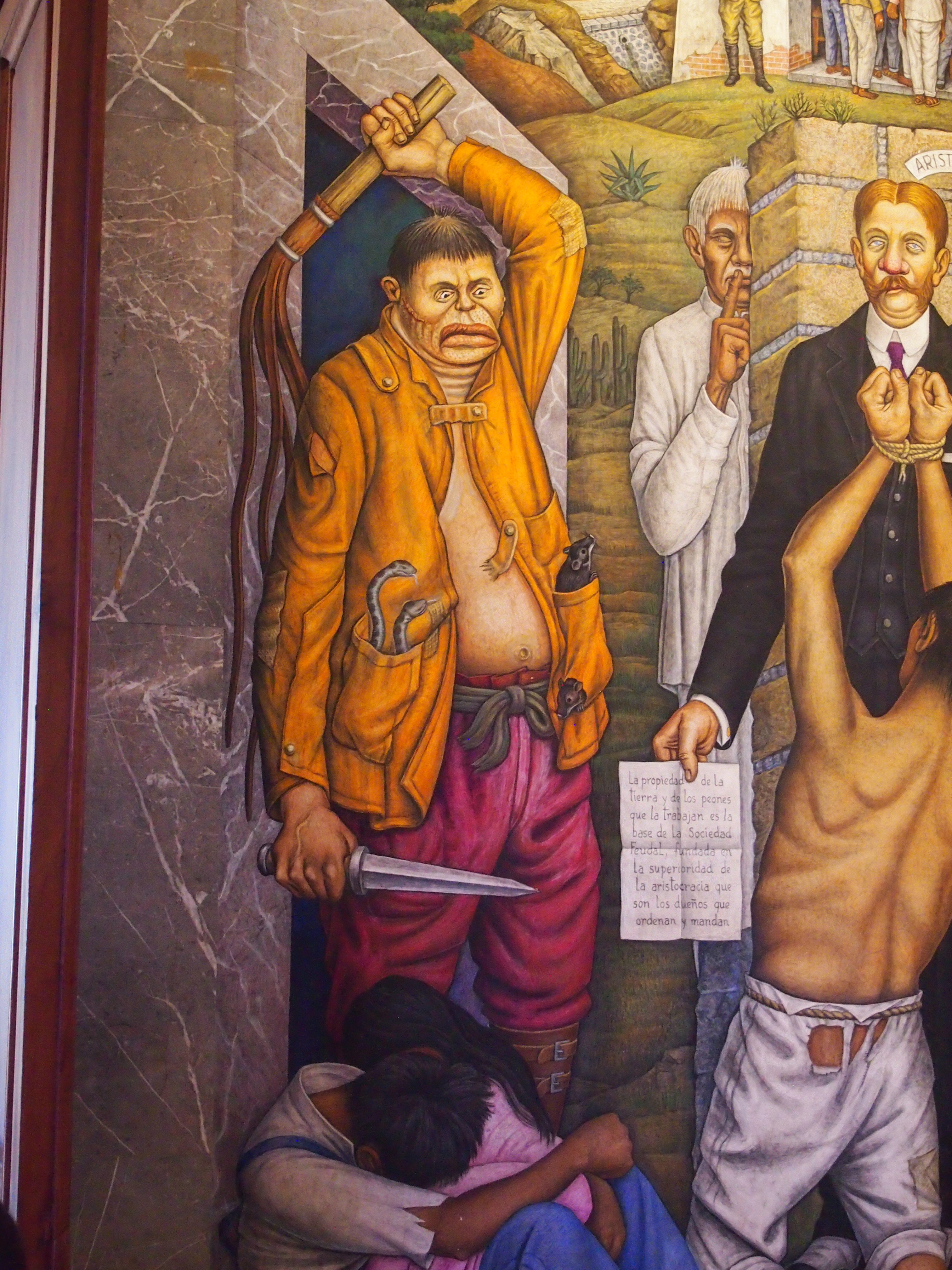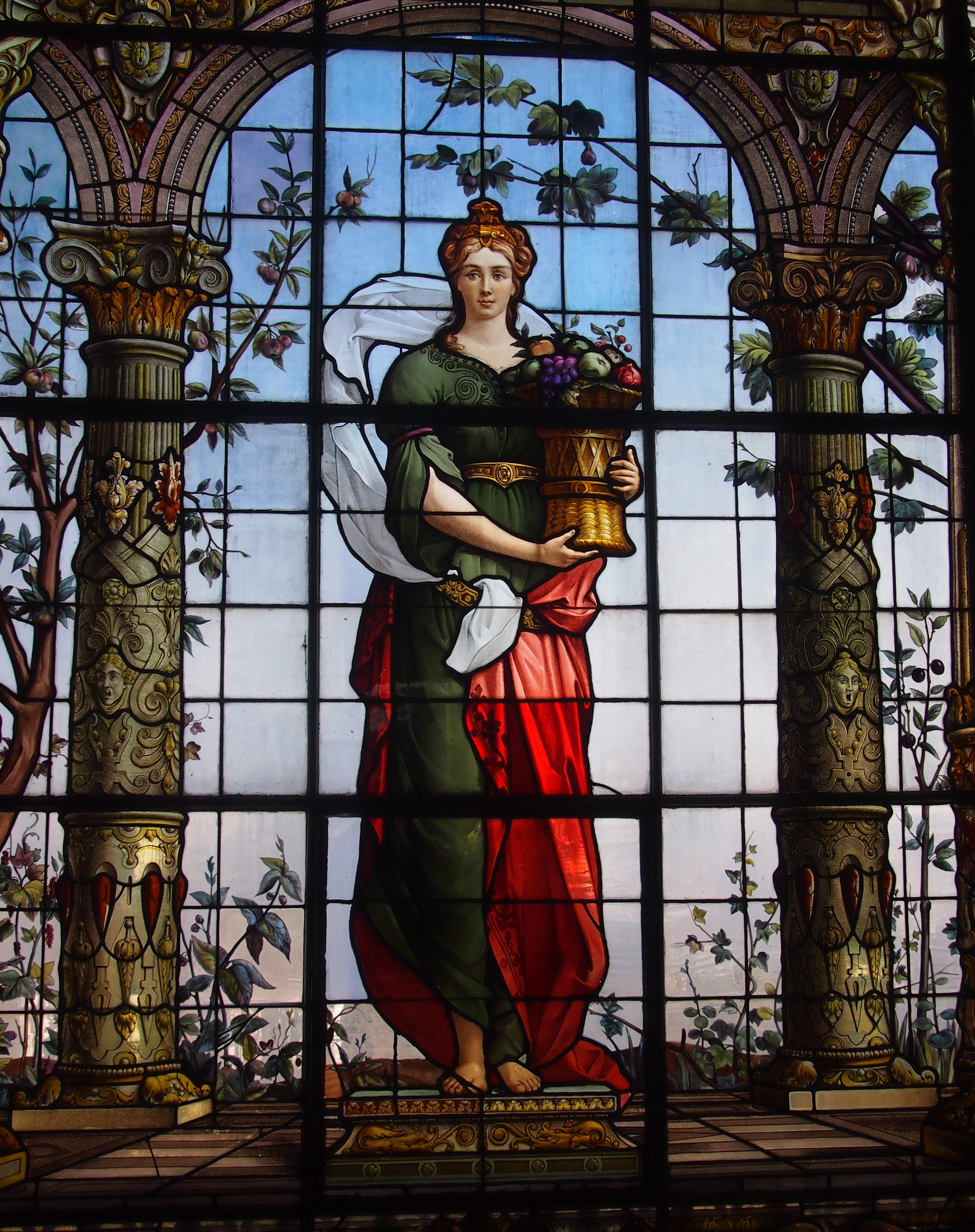Grim cold January days here in the North and, I’ve heard, it’s fairly cold in the South too. Why this is a big news story is another matter. It’s winter. You know, the season when it gets cold. Sometimes very cold.
Also, weather ≠ climate, as far as I understand these things. A cold winter no more disproves climate change than a hot summer proves it.
Way down in Mexico City, the weather was completely consistent during the days we were there. Cool in the early mornings, warm by noon, very warm in the afternoons, cool again in the evenings. Not a bit of rain, since the rainy season isn’t now. We were reluctant to leave that pattern and come back to the cold.
Were Mexico City tropical, the walk up to the Castillo de Chapultepec would have been a lot less pleasant. In modern times, the castle is on a high hill in Mexico’s vast Bosque de Chapultepec (Chapultepec Park, measuring 1,695 acres, or 686 hectares) and is open to the public. Chapultepec, I’ve read, means grasshopper hill in Nahuatl.
In earlier centuries, the hill might not have been so public. I’ve seen it described as sacred to the Aztecs, but it wasn’t until late in the colonial period that the viceroy of New Spain — Bernardo Vicente de Gálvez y Madrid, the very same fellow that lent his name to Galveston — ordered construction of a stately manor on the site. He died without realizing its completion, and the site wasn’t really used until the independent government of Mexico decided to put its military college there in 1833.
That’s what the Niños Héroes were defending to the death against U.S. forces under Gen. Winfield Scott on September 13, 1847. At the eastern entrance to the park, below Castillo de Chapultepec, is the famed memorial to the six cadets.
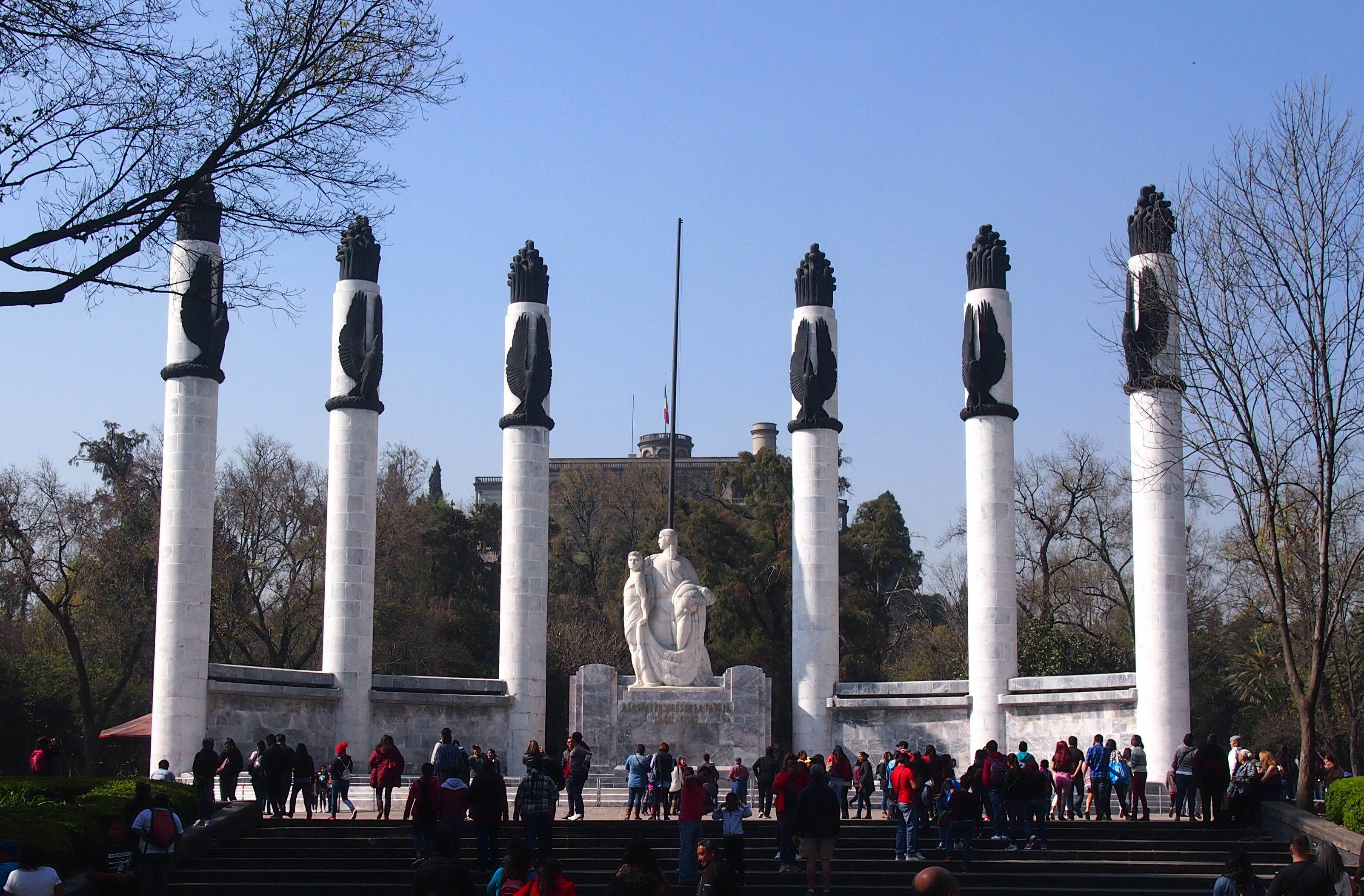 The memorial dates from 1952 and was designed by architect Enrique Aragón and sculpted by Ernesto Tamariz.
The memorial dates from 1952 and was designed by architect Enrique Aragón and sculpted by Ernesto Tamariz.
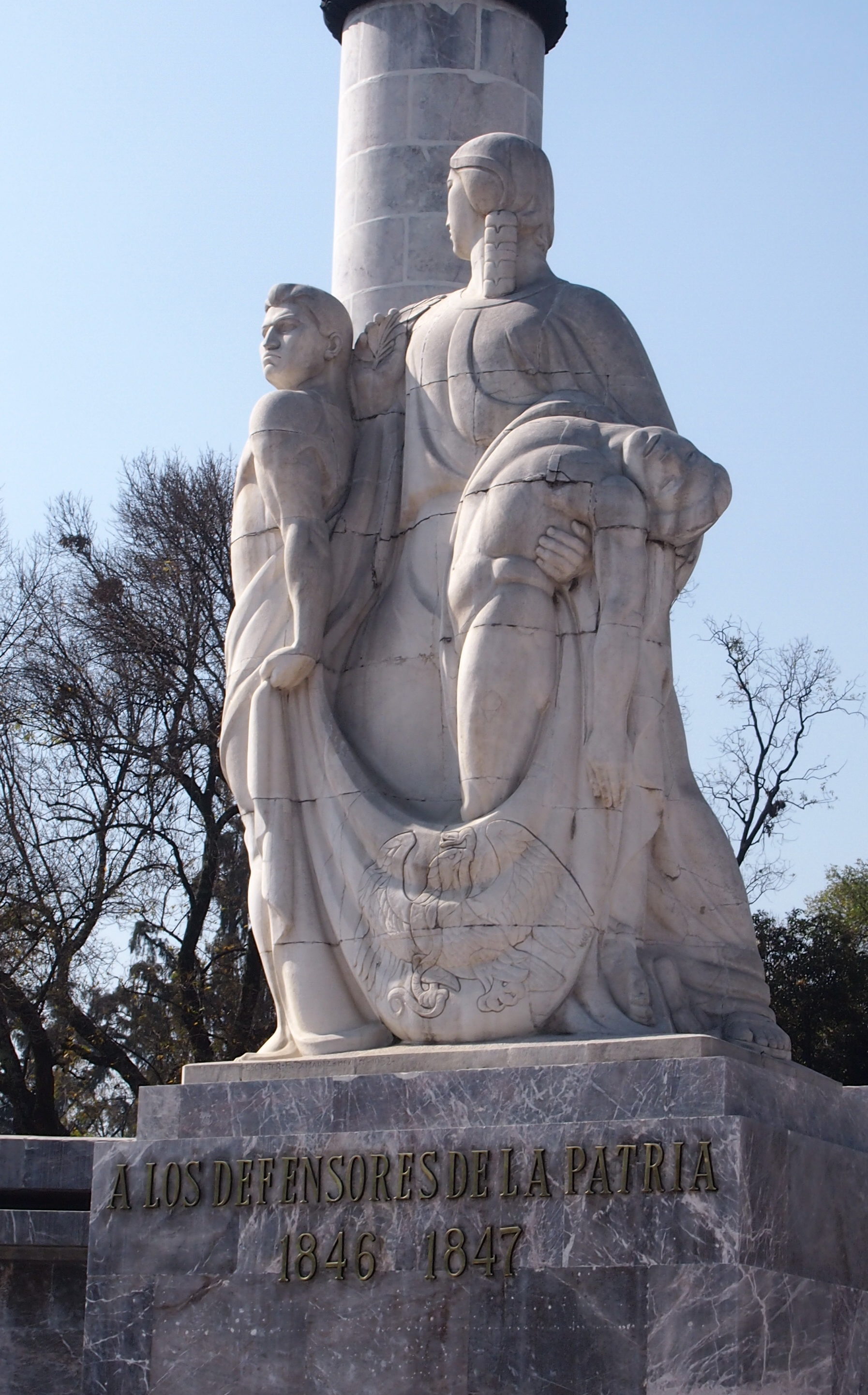 Once you get atop the hill and in the castle, you can look back toward the memorial.
Once you get atop the hill and in the castle, you can look back toward the memorial.
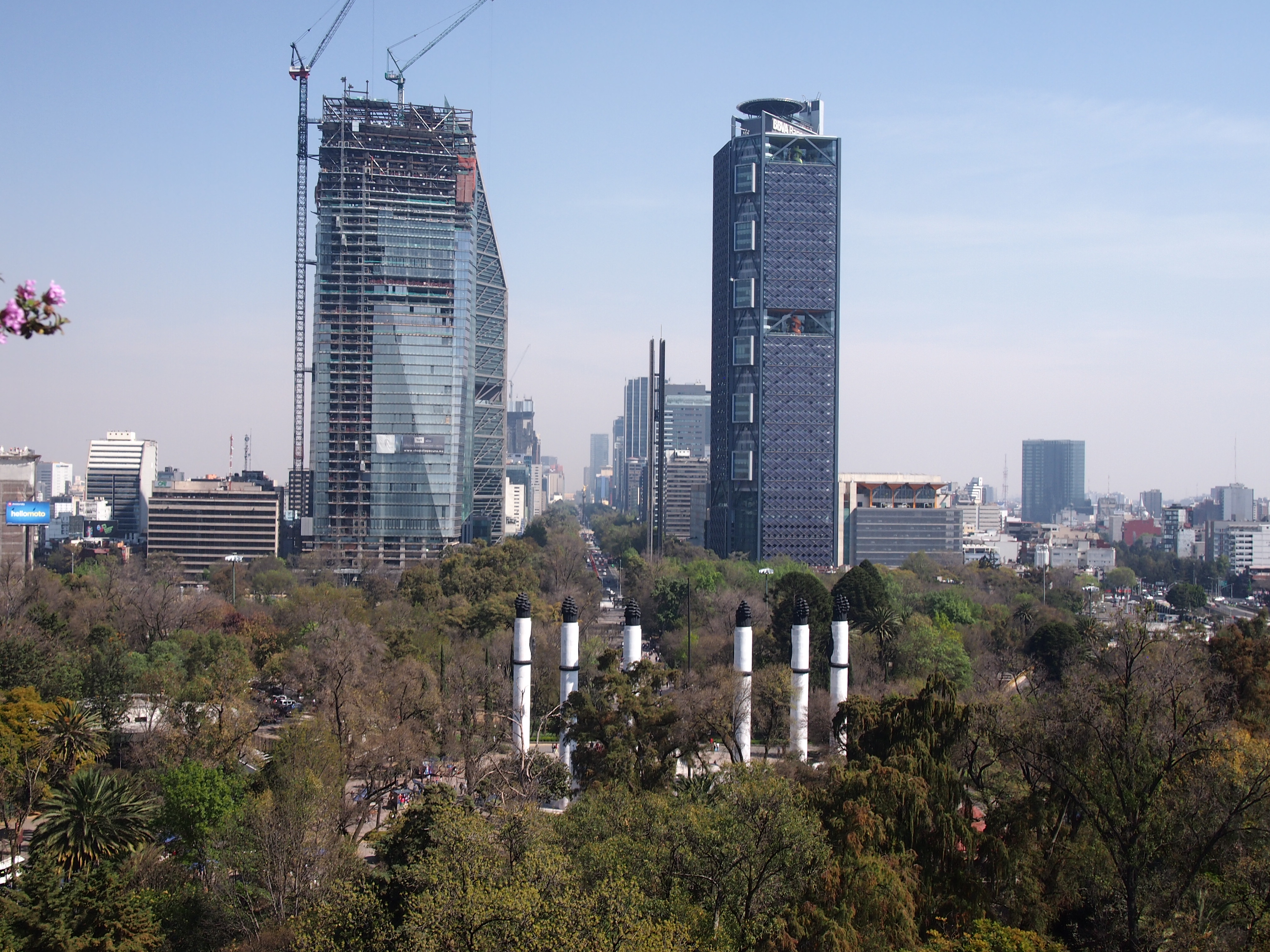 Beyond that, looking eastward — Castillo de Chapultepec would have been west of the city in the 19th century, later witnessing it grow toward the hill — is the modern Paseo de la Reforma, flanked by large buildings.
Beyond that, looking eastward — Castillo de Chapultepec would have been west of the city in the 19th century, later witnessing it grow toward the hill — is the modern Paseo de la Reforma, flanked by large buildings.
The castle started taking its current shape under the ill-starred Emperor Maximilian, who used it as a residence. Some of his portraits still hang in the museum, including one that was suitably regal, and another one from which I got the impression that the artist had given the emperor a hint of a “what have I gotten myself into” look on his face (I think it was this one).
The museum’s entrance leads visitors to a handsome plaza.
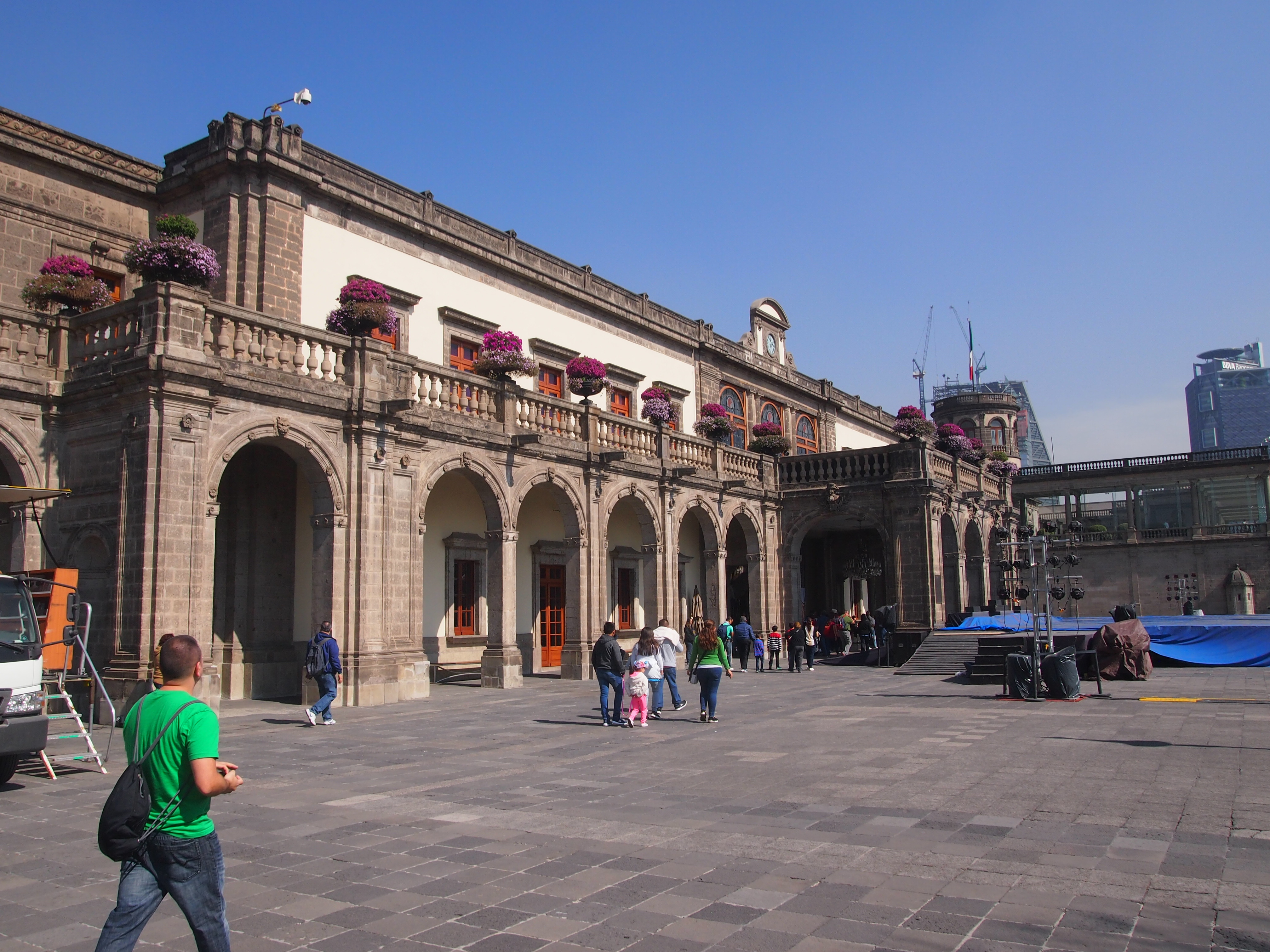 Note the stage under the tarp. That’s where the Ballet Folklórico de México gave the lively performance we attended two nights later, with a palatial backdrop bathed in alternating colored lights.
Note the stage under the tarp. That’s where the Ballet Folklórico de México gave the lively performance we attended two nights later, with a palatial backdrop bathed in alternating colored lights.
Enter the castle itself behind the temporary stage, look up, and you’ll see this 1967 mural by Gabriel Flores on the ceiling.
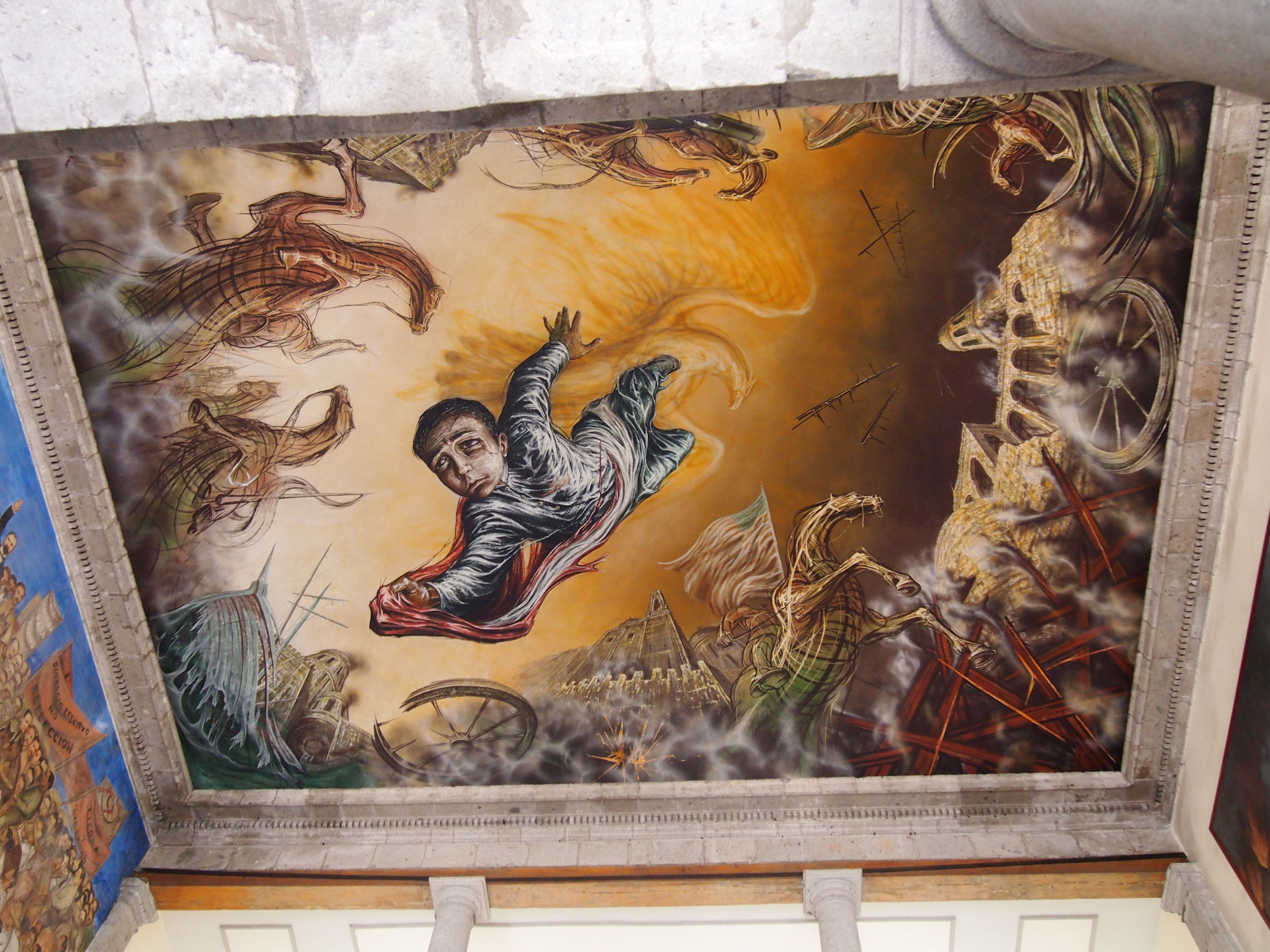 Later I learned that it depicts Juan Escutia, one of the Niños Héroes, leaping to his death from the castle walls, wrapped in the Mexican flag.
Later I learned that it depicts Juan Escutia, one of the Niños Héroes, leaping to his death from the castle walls, wrapped in the Mexican flag.
After Maximilian wound up on the business end of a firing squad, the castle was neglected for a while again until Porfirio Díaz decided he wanted to live there and so spiffed up the place. Post-Díaz Mexican presidents lived there as well, until 1944, when the building became a museum.
As a museum, Castillo de Chapultepec’s collection is extensive, including paintings and sculpture, clothing, coins, musical instruments, silver items, period furniture, ceramics, flags, a room of 19th-century carriages, books, documents and more. I was especially taken by the murals. You want to see some fine murals, go to Mexico.
Here’s a detail of Francisco I. Madero leading the 1911 revolution, part of a larger mural in the museum’s Independence Room. Juan O’Gorman, who did a mural on the front of the Lila Cockrell Theatre in San Antonio for the world’s fair in 1968, did this mural.
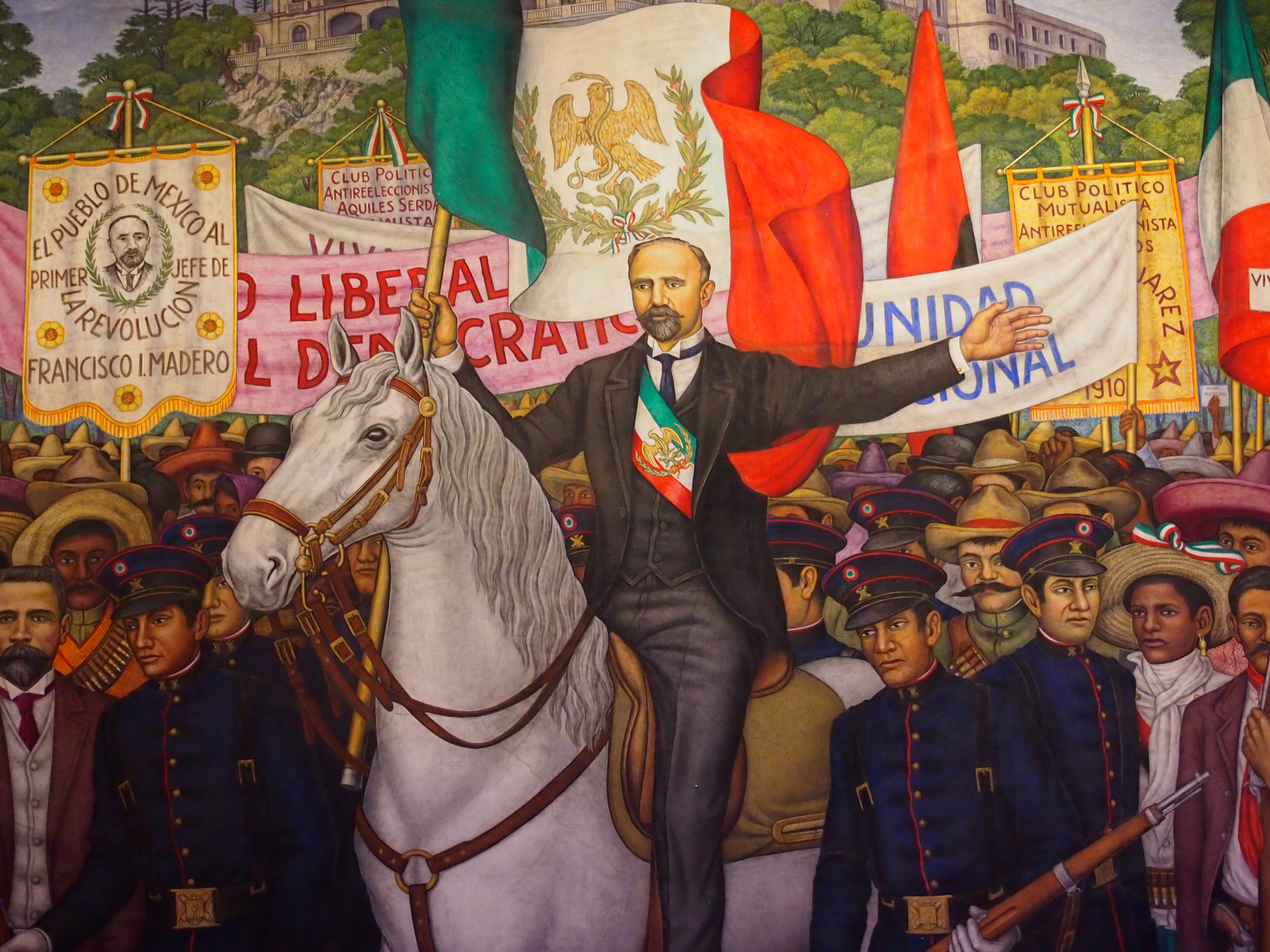 Off to the left in the Madero mural, not pictured above, is the top-hatted U.S. Ambassador to Mexico, Henry Lane Wilson, handing the presidential sash to Victoriano Huerta, who murdered Madero in 1913 to take the presidency for himself.
Off to the left in the Madero mural, not pictured above, is the top-hatted U.S. Ambassador to Mexico, Henry Lane Wilson, handing the presidential sash to Victoriano Huerta, who murdered Madero in 1913 to take the presidency for himself.
On the other side of room are Porfirio Díaz and his ugly minions, such as this fellow and his whip.
Murals aren’t everything, however. Elsewhere in the museum is a hall with a row of fine stained glass depicting various goddesses of Classical Antiquity, such as Ceres.
And Diana.
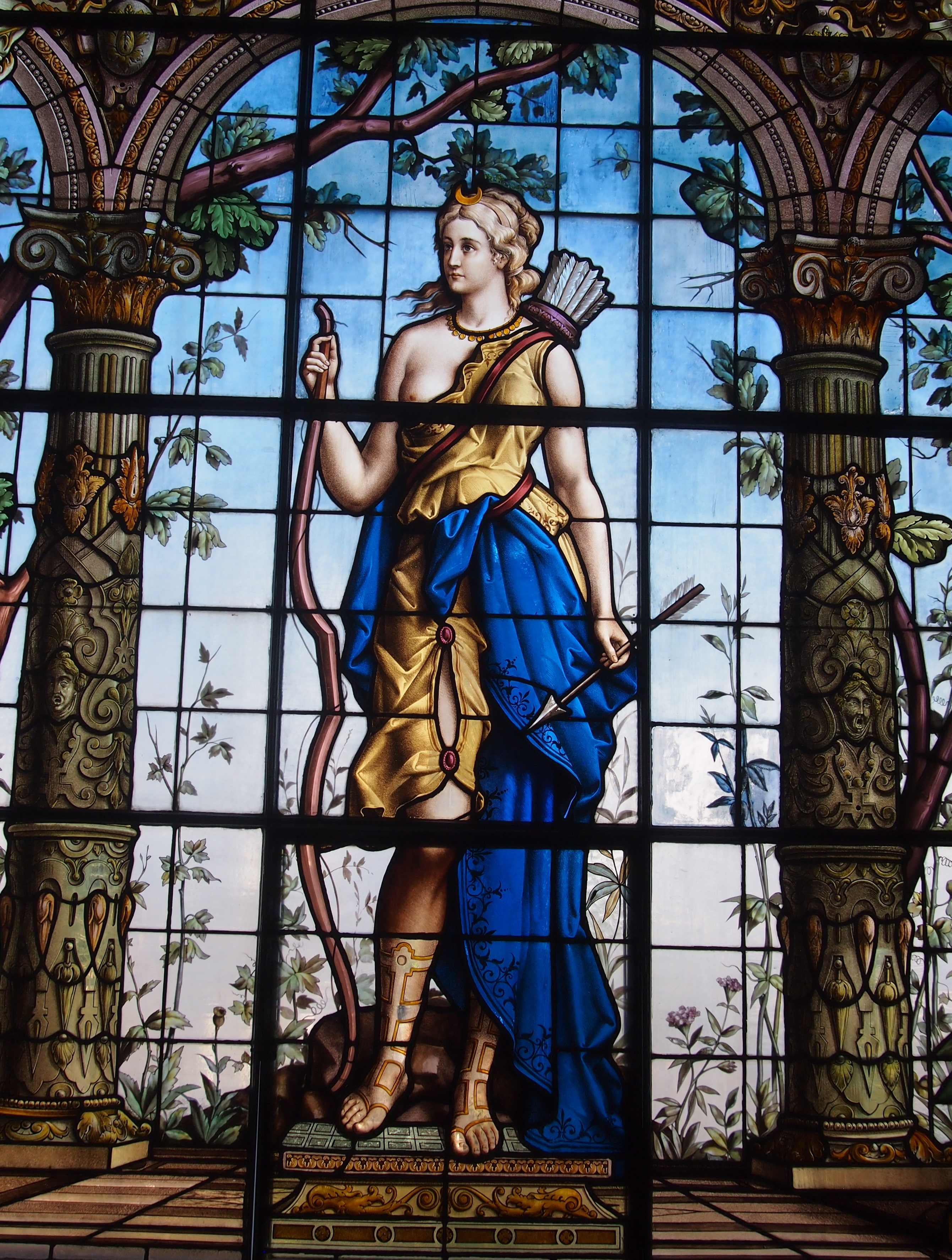 The castle’s roof gardens are exceptionally pleasant, especially under a warm afternoon sun.
The castle’s roof gardens are exceptionally pleasant, especially under a warm afternoon sun.
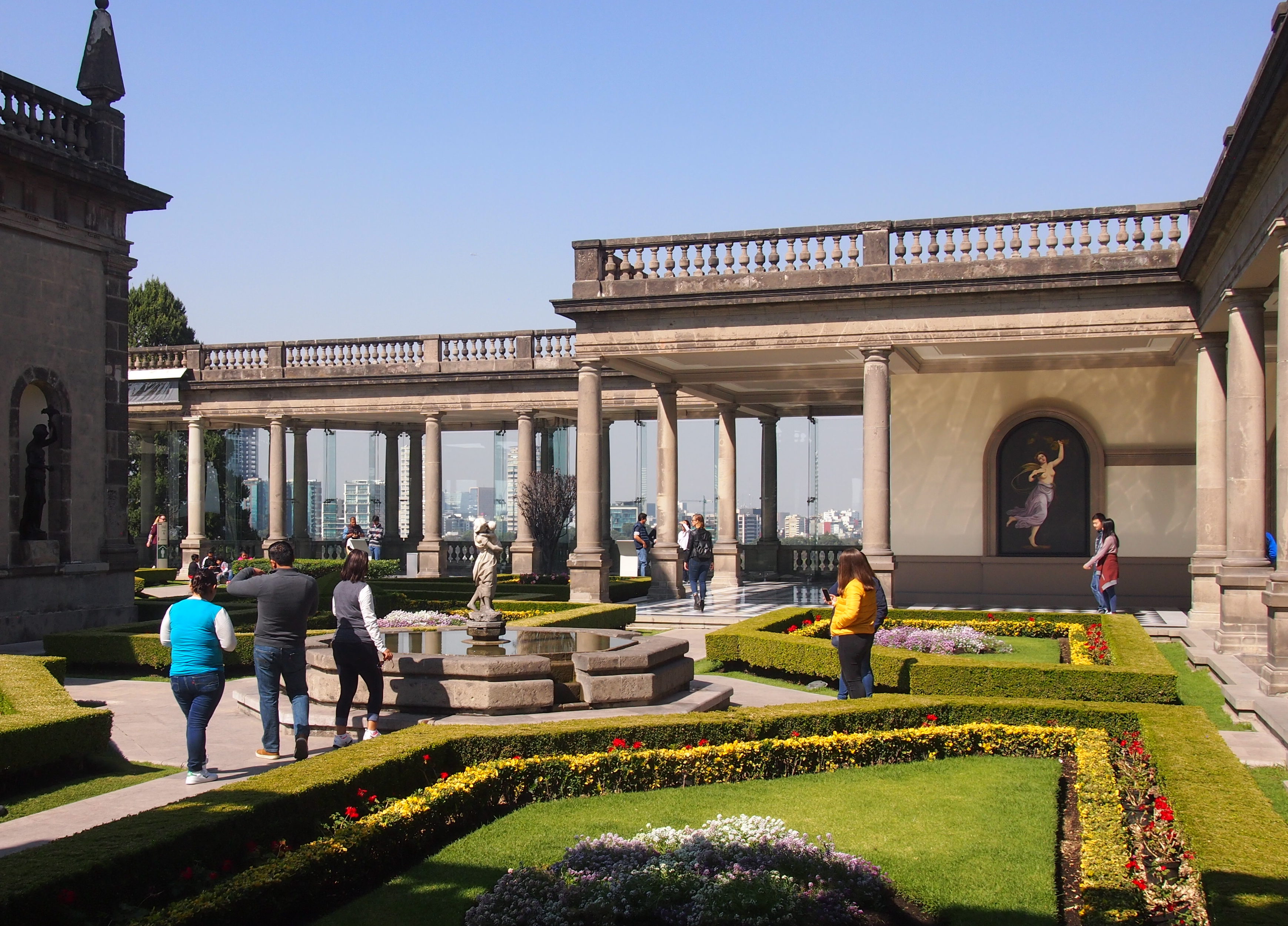 A tower that caps the castle rises over the rooftop garden.
A tower that caps the castle rises over the rooftop garden.
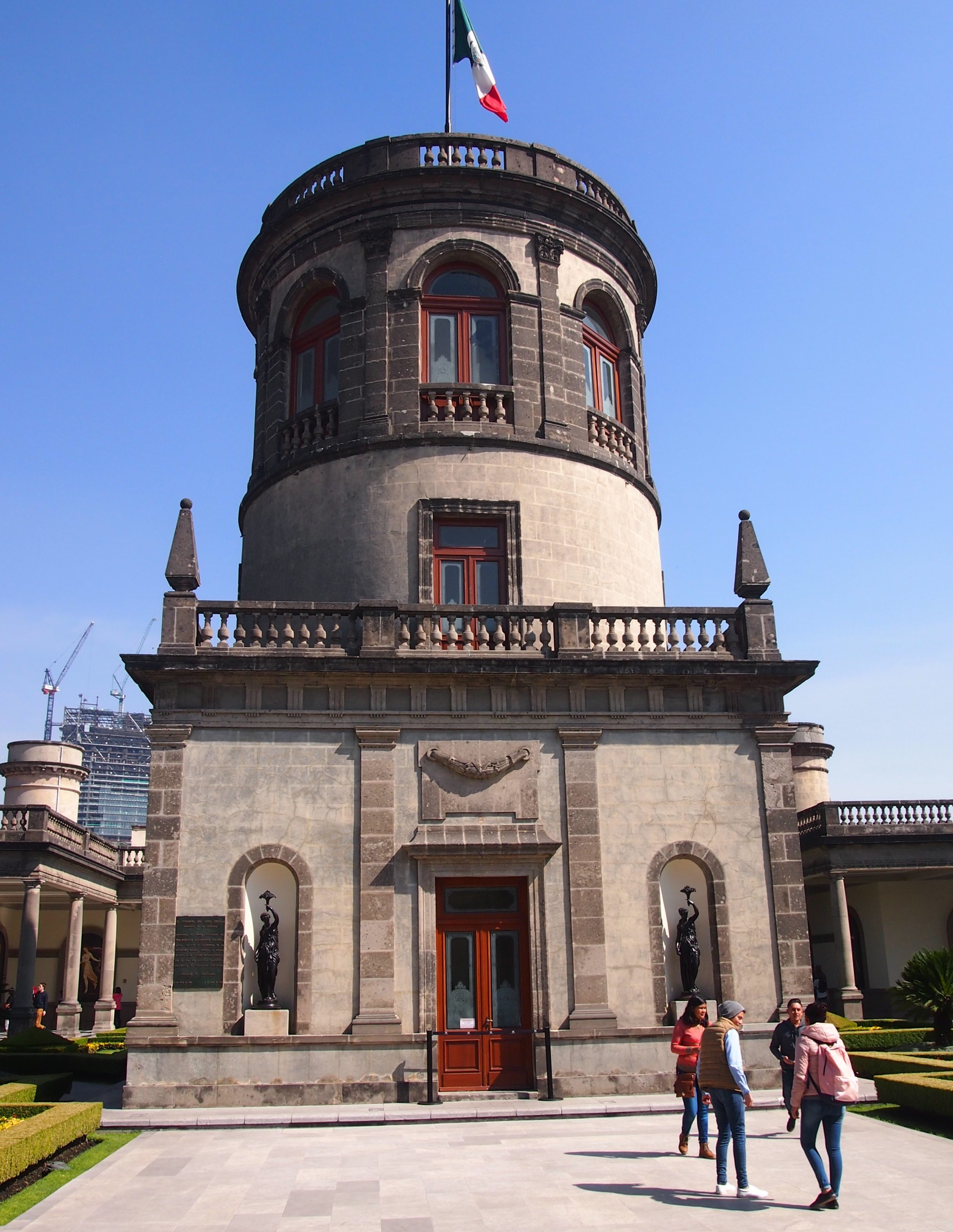 Castillo de Chapultepec was a fine way to kick off four straight days of tourism.
Castillo de Chapultepec was a fine way to kick off four straight days of tourism.
